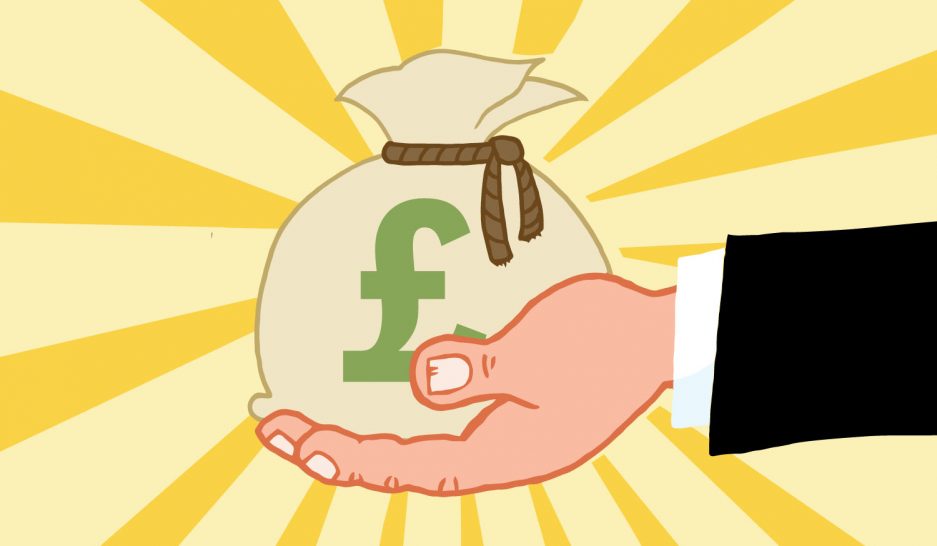This week we’ve asked our panel of mortgage brokers to determine the usefulness of Barclays’ latest incentive and discuss other incentives they have seen or would like to see that are of particular help to their clients.
Chris Hall, operations director at Mortgage Guardian and mortgage adviser at 1st Call 4 Mortgages, says incentives for first-time buyers are generally embraced by mortgage advisers, as an additional measure in supporting hopeful buyers onto the housing ladder.
Colin Payne, associate director, Chapelgate Private Finance, believes Barclays has missed a trick with its recent offering, outlining changes he would introduce to make the incentive more appealing.
Chris Schutrups, managing director, The Mortgage Hut Group, says the bigger picture is often important to borrowers just starting out and cashback offers can be a real helping hand, meaning that rate isn’t always king.
 Chris Hall is operations director at Mortgage Guardian and mortgage adviser at 1st Call 4 Mortgages
Chris Hall is operations director at Mortgage Guardian and mortgage adviser at 1st Call 4 Mortgages
Customer incentives have been part and parcel within the mortgage industry ever since I can remember. A free basic valuation and a first-time buyer fixed rate from the Halifax certainly eased the pain for me when I bought my starter home back in the early 90s.
Enticements come in many different guises these days and are not just for the first-time buyer as mortgage lenders find different ways to attract new business from specific groups of people as well as retain mortgage business already on the books.
While some customer incentives are a nice motivator such as the classic ‘free valuation and paid legal fees’ on a remortgage, there are a number of incentives which have undoubtedly stimulated the market in recent times, particularly for those looking to get on the first rung of the property ladder. Some proactive lenders, particularly the top five, have really encouraged first-time buyers to purchase by way of incentive when they would otherwise be unable to do so. This has possibly made incentives more important than ever before, especially when house price rises continue to outstrip salaries at a phenomenal rate.
One of the most important offers I have seen from a mortgage lender has been the facility to use the equity from a parent’s property in a market when the first-time buyer struggles with the large deposits needed to buy their first home.
Mortgage brokers are generally in favour of incentives that help first-time buyers, but warn of the true costs behind some of the carrot and stick offers such as cashback. Barclays Springboard Mortgage is an example of a change of criteria incentive. Some lenders have offered borrowers a facility to accept gifted deposits to stimulate growth as have sole proprietor joint application mortgages.
As the market continually changes we should applaud the creativity lenders use to devise schemes and incentives for their customers when market conditions, government legislation and industry regulation prove a constant challenge. Brokers also quip that short queuing when submitting applications, quick instruction to valuation and personal underwriting should be more emphasised as a lender incentive.
While a lack of my first incentive would not have stopped me buying we are now in an age when they really can make a big difference.
 Colin Payne is associate director, Chapelgate Private Finance
Colin Payne is associate director, Chapelgate Private Finance
I feel Barclays has missed a trick with their homebuyer cashback mortgage in that the cashback is paid after completion. It will be interesting to see the success of such a product given you’re naturally sacrificing a keener interest rate and those purchasers that have a 20% deposit may not have such a need for the cashback.
Potential borrowers for this type of product must carefully consider whether it is of any benefit at all. The chances are it would be more beneficial to borrow at a higher loan-to-value (to retain some savings) and still obtain a keener interest rate i.e. five-year fixed rates at 85% LTV are starting around 2.19%, 0.5% cheaper than Barclays offering.
I can see the sentiment for such a product, but personally I would prefer it aimed at borrowers with smaller deposits, where the cashback can add value and make a real difference. While I accept it is portable, I’d also prefer it not to be linked to a five-year fixed rate as a lot can happen in a five-year cycle. This is why I preferred Halifax’s offering of a 1% cashback that could be coupled with a two-year product.
Despite the above, they are much better than historical cashbacks, I recall Northern Rock offering an 8% cashback with the requirement to remain on their standard variable rate for five years, one of the highest in the market at the time. However, if interest rates move the wrong way the borrower is potentially in all sorts of problems.
Ultimately, lenders market these products as a ‘sprat to catch a mackerel’. The up to £250,000 figure looks attractive but incentives aren’t what they may appear, scratch below the surface and the chances are there would be a much more financially beneficial product available elsewhere.
 Chris Schutrups is managing director, The Mortgage Hut Group
Chris Schutrups is managing director, The Mortgage Hut Group
The Stamp Duty cashback mortgage from Barclays is a great incentive to get the market moving at the bottom end and, to be honest, anything that the lenders can do to stimulate activity at that first-time buyer level has got to be welcomed.
Barclays is not the first by any means. Under the Woolwich brand, its Stamp Duty incentive is fabulous and similar to the one offered previously by Halifax.
Santander and other lenders have always offered free valuations which takes away an expensive upfront cost which really resonates with first-time buyers.
Those people starting out on the property ladder aren’t always totally rate focused. Some times the bigger picture for them means having more money upfront when they move in.
Whether they are shopping at John Lewis or Ikea it’s expensive to furnish your first house as we all know; some people want to buy a house as a project too and they will need more cash available to pay for some of the improvements and enhancements that will add value to their new home. For all of these people, if there is more cash available to do that then that is going to be a big plus for buyers.
In a market where the war to the lowest rate has hit the bottom, incentives are a fabulous way of standing out from the crowd – as long as it’s communicated well to brokers so they don’t just rely on the sourcing systems to show the best rate.
















